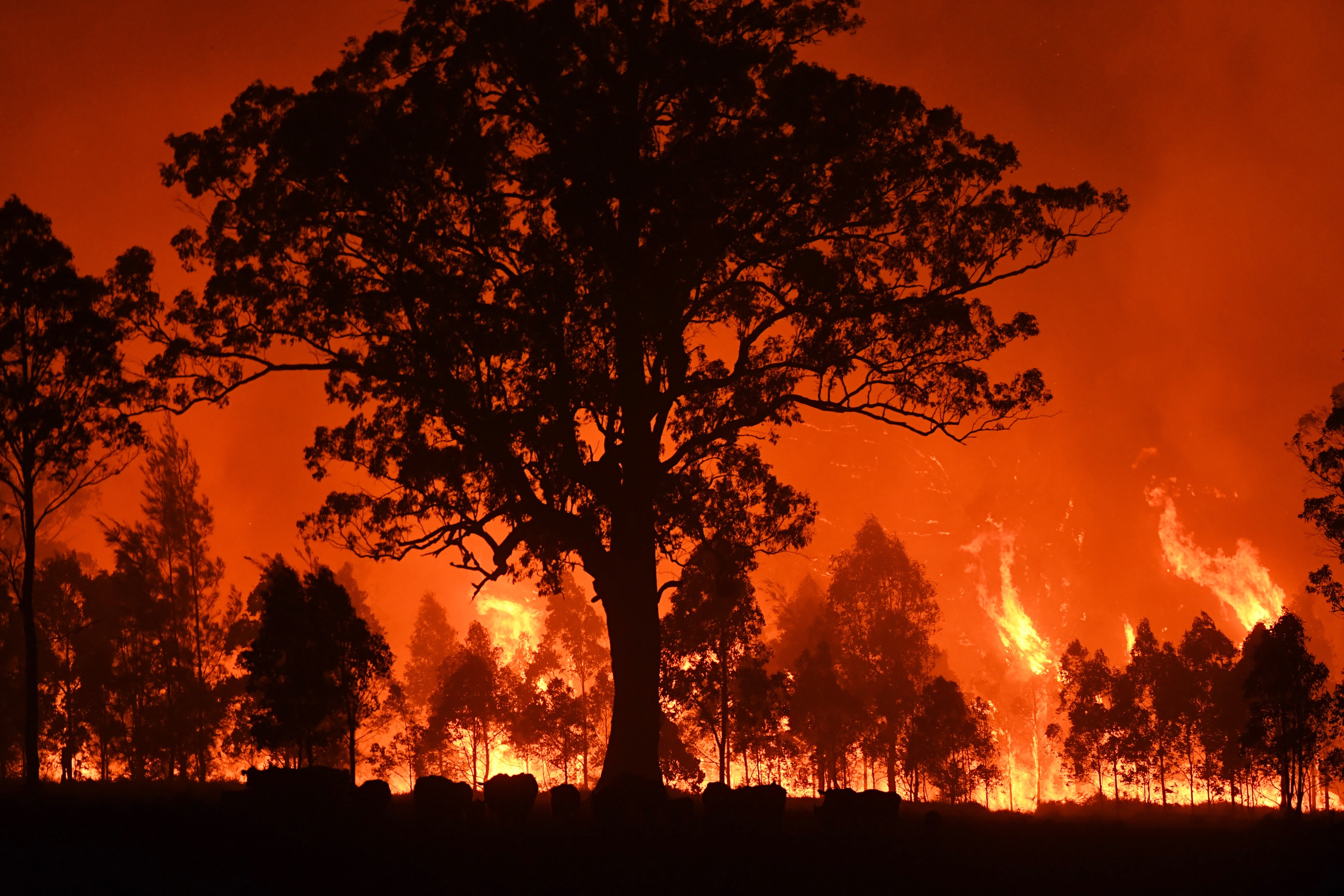The Significance of Bushfire Monitoring in Fire Protection
In the realm of fire defense, the relevance of effective bushfire administration can not be understated. As neighborhoods around the world grapple with raising circumstances of wildfires, the proactive technique to stop and reducing these all-natural calamities with strategic bushfire management strategies has actually become a vital element. Past the instant threat to human life and home, the interplay in between bushfire administration and environmental conservation, area participation, and climate change positions complex difficulties that demand extensive options.
Value of Proactive Bushfire Avoidance
Positive bushfire avoidance approaches are crucial in alleviating the ravaging impacts of wildfires on environments and areas. By taking preventative procedures prior to a bushfire happens, the risks connected with these natural catastrophes can be substantially decreased. One crucial aspect of aggressive bushfire avoidance is fuel administration. This involves decreasing the amount of flammable material, such as dead vegetation and dry leaves, that can work as fuel for fires. Gas administration methods include prescribed burns, where regulated fires are deliberately lit to minimize the build-up of combustible material.
Informing the public on fire safety and security practices and advertising neighborhood understanding regarding the value of bushfire prevention are vital elements of proactive techniques. Inevitably, aggressive bushfire prevention plays a substantial duty in securing communities and communities from the damaging effects of wildfires.
Duty of Area Interaction in Fire Protection
Involving the area in fire protection efforts is essential to improving the performance of proactive bushfire avoidance approaches. Area interaction plays a vital role in cultivating a collective understanding of the dangers posed by bushfires and the value of readiness steps. By entailing regional residents, authorities can distribute essential information on fire security techniques, emptying treatments, and very early caution systems, equipping individuals to take positive actions to guard their homes and lives.
By cultivating a society of preparedness and collaboration, neighborhoods can reinforce their ability to respond successfully to bushfire emergencies, minimizing the effect on properties and lives. Inevitably, community involvement is a keystone of detailed fire security strategies, highlighting the significance of collective activity in protecting prone locations from the risk of bushfires.
Value of Wild Animals Preservation in Bushfire Management
Preservation of wild animals plays a vital role in effective bushfire management techniques, ensuring the defense of diverse environments and biodiversity in fire-prone areas. Wild animals preservation is crucial as it adds to the total durability of communities, aiding in their capability to recover and stand up to from the influence of bushfires. By conserving habitats and securing different types, the all-natural equilibrium within these communities is kept, which is vital for their long-term health and wellness and sustainability.
Additionally, wild animals preservation likewise helps in minimizing the threat and intensity of bushfires. Healthy ecosystems with unspoiled wild animals populations can this link act as all-natural firebreaks, reducing the spread of fires and limiting their destructive capacity (BAL Report). Specific pet varieties, like tunneling pets or birds that spread out seeds, play special functions in helping or stopping fires in the post-fire regrowth of environments
Including wildlife preservation right into bushfire monitoring approaches is not only important for guarding biodiversity but additionally for advertising the total health and wellness and strength of environments in the face of raising fire dangers.
Benefits of Strategic Fuel Decrease Programs
Purposefully implementing gas reduction programs is important in look at here reducing the risk and influence of bushfires in fire-prone regions. These programs include controlled burning, mechanical cleaning, and various other techniques to reduce the amount of flammable greenery available to sustain wildfires. By strategically decreasing gas lots in essential areas, such as close to residential neighborhoods or critical facilities, the intensity and spread of bushfires can be considerably reduced.
One of the primary advantages of fuel decrease programs is the improvement of overall fire strength in an environment. By producing critical gas breaks and decreasing the connection of plants, these programs assist to interrupt the course of a bushfire, making it simpler for firefighters to extinguish the blaze and consist of. In addition, fuel decrease programs can protect biodiversity by preventing exceedingly intense fires that can ravage habitats and intimidate wild animals populaces.
In addition, these programs can also protect human lives and home by lowering the danger of catastrophic fires that posture a substantial risk to communities. Ultimately, critical gas decrease programs play an important function in aggressive bushfire management and promoting a safer setting for both people and nature.
Influence of Climate Adjustment on Bushfire Danger

Higher temperatures result in drier vegetation, making it much more susceptible to ignition. Minimized rains in specific regions prolongs drought problems, better increasing the flammability of the landscape. In addition, the altering environment has actually Click This Link changed wind patterns and weather, resulting in more irregular fire habits and fast fire spread.
As the environment remains to change, the frequency and intensity of bushfires are expected to climb, requiring a positive and adaptive approach to bushfire administration. Methods must progress to make up the changing threat landscape, including climate estimates and considering long-term strength in fire monitoring planning. Attending to the impact of environment change on bushfire risk is important in developing efficient methods to protect lives, residential or commercial property, and the atmosphere.
Conclusion
In final thought, proactive bushfire prevention, neighborhood engagement, wildlife conservation, calculated gas reduction programs, and consideration of environment modification are crucial parts in reliable fire defense. By carrying out these techniques, we can much better handle bushfire dangers and secure both human lives and the setting. BAL Assessment. It is vital that stakeholders function together to prioritize these steps to decrease the terrible effect of bushfires on communities and areas

As the environment continues to transform, the regularity and strength of bushfires are anticipated to climb, necessitating a positive and flexible strategy to bushfire management.In conclusion, aggressive bushfire avoidance, community interaction, wildlife preservation, strategic gas reduction programs, and factor to consider of climate modification are crucial parts in effective fire protection.